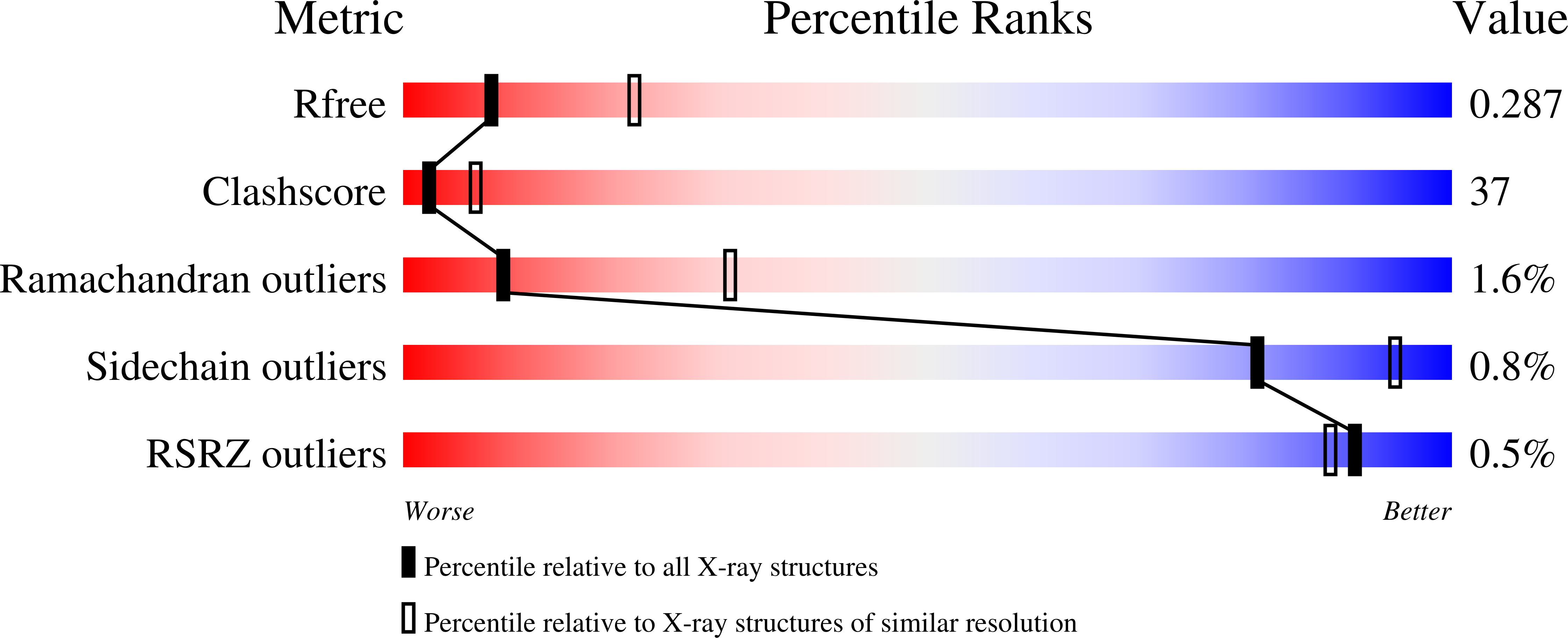Energetic optimization of ion conduction rate by the K+ selectivity filter.
Morais-Cabral, J.H., Zhou, Y., MacKinnon, R.(2001) Nature 414: 37-42
- PubMed: 11689935
- DOI: https://doi.org/10.1038/35102000
- Primary Citation of Related Structures:
1JVM - PubMed Abstract:
The K+ selectivity filter catalyses the dehydration, transfer and rehydration of a K+ ion in about ten nanoseconds. This physical process is central to the production of electrical signals in biology. Here we show how nearly diffusion-limited rates are achieved, by analysing ion conduction and the corresponding crystallographic ion distribution in the selectivity filter of the KcsA K+ channel. Measurements with K+ and its slightly larger analogue, Rb+, lead us to conclude that the selectivity filter usually contains two K+ ions separated by one water molecule. The two ions move in a concerted fashion between two configurations, K+-water-K+-water (1,3 configuration) and water-K+-water-K+ (2,4 configuration), until a third ion enters, displacing the ion on the opposite side of the queue. For K+, the energy difference between the 1,3 and 2,4 configurations is close to zero, the condition of maximum conduction rate. The energetic balance between these configurations is a clear example of evolutionary optimization of protein function.
Organizational Affiliation:
Department of Molecular Biophysics and Biochemistry, Yale University, 260 Whitney Avenue, New Haven, Connecticut 06520, USA.





















